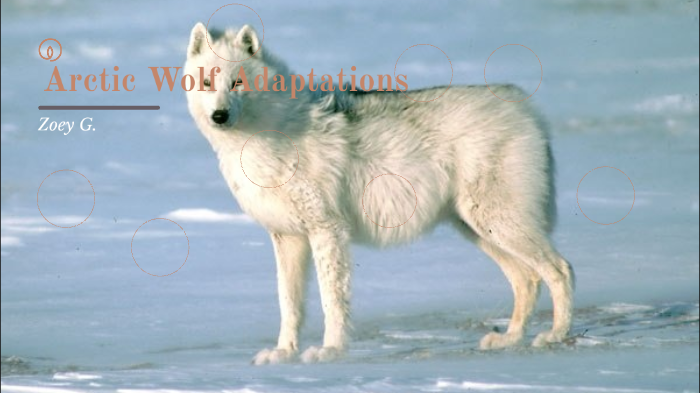
The artic wold also has especially thick fur, a thick layer of body fat and relatively small ears, to prevent heat loss. This is the same mechanism used by water birds such as penguins and ducks. Their paws also have a heat exchanging mechanism so they remain cooler than the rest of the body and blood that enters the paws is used to heat up blood that is leaving them, so that the wolf can maintain a stable body temperature.

These are the reasons Ayla and I think adaptations are very important in human and animal lives. The bad thing about being an endangered animal is that without adaptations the arctic wolf or any other endangered animal wouldnt be able to protect themselves. For example, they have furry paws for warmth and to provide a better grip on ice. As you can see adaptations are key to animals and even humans lives. The Arctic wolf has several adaptations, which allow it to survive in the icy territory it calls home. Other Physical Features endothermic homoiothermic. Females in most wolf geographical populations typically weigh 510 lb (2.34.5 kg) less than the males. Gray wolves have a dense underfur layer, providing them with excellent insulation against cold conditions. The wolves follow their prey south, returning to the north the following spring. Arctic wolves are bulkier than their relatives (grey wolves) and can weigh between 100 to 170 pounds. They have white fur, which allows them to blend into their snowy surroundings. Despite very cold water temperatures, krill are highly active. As the soil is poor, food for herbivores is also limited, and as the winter comes, the wolf's prey, large grazers such as musk ox and caribou are driven south to seek out better food. Arctic Wolves (also sometimes called the Polar Wolf or White Wolf) are animals of the far north. Description: Arctic wolves have adapted very well to the icy environment where they live. Can withstand long periods of starvation (up to 200 days) by using their muscle as a reserve, the krill shrink in the process, this happens over the winter months when the krill are under seasonal sea ice and there is little or no photosynthesis.
ARCTIC WOLF ADAPTATIONS PDF
pptx), PDF File (.pdf), Text File (.txt) or view presentation slides online.
ARCTIC WOLF ADAPTATIONS DOWNLOAD
The arctic wolf eats a wide variety of food sources, the majority is of large herbivores such as moose, caribou, deer, elk etc. arctic wolves - Free download as Powerpoint Presentation (.ppt /. The ground is rarely unfrozen, and when a thaw occurs, it affects only the top few centimetres of soil. Wolves howl for family bonding, hunting and communicating with other wolves outside the pack.

The air temperature in its hunting grounds does not rise above -30☌ in April, and this combines with wind chill to cause temperatures of -100☌ or less. It has to be, as it inhabits some of the most hostile terrain on earth. Also known as the polar wolf or white wolf, the arctic wolf is a highly resilient animal. Thanks to its isolation, the arctic wolf is not threatened by hunting and habitat destruction like its southern relatives.


 0 kommentar(er)
0 kommentar(er)
